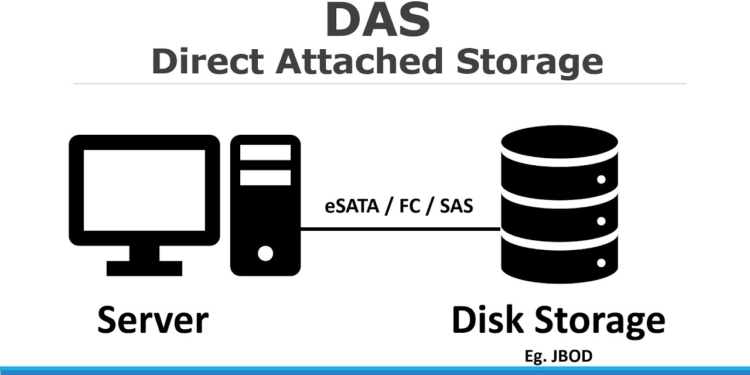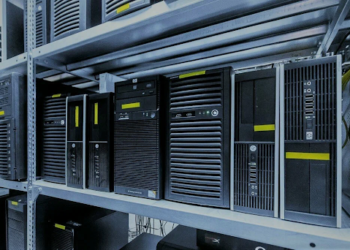A DAS (Direct Attached Storage) system is the core of many small businesses and personal setups. It is directly connected to your PC. Thus, there isn’t a middle network. Simply and quickly access your files. Here’s the problem, though.
Despite their ease of use, DAS systems can slow down if not used properly. Low storage space and sluggish file transfers are problems that many users encounter. This article is helpful in that regard.
You’ll discover ten easy yet effective ways to improve the speed, security, and dependability of your DAS system. These tips will help you work faster and save more time if you use DAS for daily tasks or video backups. This article will give you the following:
- Easy methods to speed up your DAS
- Tips to keep your files safe
- Steps you can follow without tech help
Together, we can now unleash your DAS system’s full potential.
1. Make Use of SSDs for Feeling Speed
Solid-state drives, or SSDs, are significantly faster than conventional hard drives. They speed up file loading and maintain system stability. Making the switch to SSD will allow your DAS system to save and open files in seconds, which is a huge help when working with large data files or videos.
First, check your setup.
Verify that your DAS system supports SSDs. The majority of new systems do. Look for drives that can read and write data quickly. This will allow you to maximize the benefits of your upgrade.
2. Keep Your Firmware Updated Always
Firmware is the brain of your DAS device. It controls how the hardware works. If you don’t update it often, your DAS may get slow or act strangely. Updates fix bugs and add new features that help your storage perform better.
Here’s why it matters:
- Updated firmware keeps your DAS stable.
- Fixes bugs that slow your system.
- Adds support for new hardware or file systems.
Easy Steps to Update
Visit the DAS brand’s website. Download the latest firmware for your model. Follow the step-by-step guide. Never skip this process. It keeps your system healthy.
3. Use USB 3.2 or Thunderbolt for Faster Transfers
If your DAS connects through USB, use USB 3.2 or higher. Even better, go for Thunderbolt if your system supports it. These ports move files faster than older ones. That means less waiting and more doing.
Match the Cable and Port
Using a fast port is not enough. You also need a good-quality cable. Make sure both your computer and DAS support the same fast connection, which boosts your data speed.
4. Use a Power Backup to Avoid Sudden Shutdowns
Sudden power loss can damage your DAS and even erase your files. A small power backup unit, or UPS, keeps your device safe during blackouts or power cuts. Get one that tells you when power is low. That way, you can shut down your DAS safely, keeping your data and drive safe.
Why do you need a UPS:
- Prevents sudden shutdowns.
- Keeps files from getting corrupted.
- Gives you time to turn off the DAS safely.
5. Watch the Temperature of Your Drives
DAS systems can get hot if used for long hours. Heat can slow them down or damage the drive. Use a fan or cooling pad to keep things cool and steady.
What can help lower the heat:
- Use your DAS in a cool room.
- Avoid blocking the vents.
- Install software that checks drive temperature.
Use Tools to Check Heat
Many DAS systems have software to track temperature. Use it often. If your drive gets too hot, act fast. Heat is a silent killer for storage devices.
6. Back Up Your Data in Two Places
Never keep all your files in just one DAS. Things can go wrong. Always keep a second backup on another drive or cloud service. This saves you from big losses.
Pick a day each week to back up. Use software that copies files on its own. With a set plan you never lose sleep over lost data.
7. Use Antivirus to Keep Files Safe
A virus can damage your data or slow down your system. Use a good antivirus tool that checks files as they’re saved and keeps it updated to block new threats.
Why is an antivirus important for your DAS?
- Blocks harmful files from spreading.
- Keeps your backups safe from threats.
- Helps your system run smoothly.
Set the antivirus to scan your DAS weekly. If it finds a problem, fix it right away. Safe files mean a smooth-running DAS.
8. Label Your Drives and Folders Clearly
When you have many drives and folders, things can get messy. Use clear names so you know what’s where. This saves time and avoids mistakes.
Use names like Work_2025 or Backup_July. Stick to the same style every time. It helps you find things fast and avoid confusion.
Final Words to Keep Your DAS Fast and Safe
Your DAS system is more than just a storage box. It holds your files, your work, and your memories. With the right care, it can run like new for years. These 10 awesome tips are not hard to follow. You don’t need special tools or skills—just a little time and smart habits.
Start by picking two or three tips today. Then add more as you go. Soon, your DAS will be faster, safer, and more reliable. And you’ll spend less time fixing problems and more time getting things done. Make your DAS work smarter for you every day.





